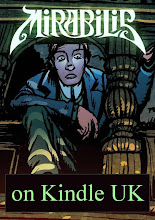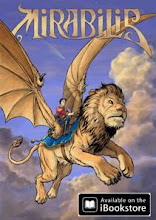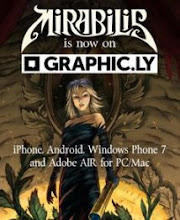
It was only on reading Peter Richardson’s fascinating posts about Jim Steranko that I remembered Jaunty Jim’s artwork for Nick Fury Agent of S.H.I.E.L.D. was what first made me aware of the potential of comics to tell a story cinematically. I don’t know why it took me so long, because I had been reading comic books avidly by then for several years and I was a total movie nut almost from infancy. (At the age of six I was telling my bewildered teacher how there was this scene of Lawrence striding along the top of a train and it was really brilliant because David Lean had only shot Peter O’Toole’s feet. I really was quite a scary little boy.)
Comparisons are not only invidious, they don’t really work. To say that comics are like cinema is to miss all the ways that they can do things differently. Alan Moore has something to say about that:
What I like is the way a camera can pick out a detail for emphasis – like running feet in a Lean or Kurosawa movie, the cage of shadows in film noir, the hiss of steam from a pipe in Roeg’s Bad Timing, or bamboo swaying in the moonlight in King Hu’s Touch of Zen. The “camera” in this context could equally well be our viewpoint in a comic, a videogame or even a novel.
But what I really love is when the camera/viewpoint explores the 3D-ness of a scene. Maybe it has something to do with our hunter-gatherer past that makes spatial relationships so fascinating and pleasurable? The three panels above are from fairly late on in the Mirabilis story and come right after a sequence of several pages that has taken us from the streets of Constantinople to the rooftops and right across the bay, and there from the mast of a ship to its deck. Breathtaking comics work from Leo there, and I hope we get the chance to show it all to you soon. (Update: it's here in Book Two.)
Games, of course, excel at this particular “cinematic” trick, and one of the best examples is in the classic game Outcast. Watch from 4 minutes in:
- though for the full effect you really need to play the whole game. Ten years old and still the best - trust me.
Comparisons are not only invidious, they don’t really work. To say that comics are like cinema is to miss all the ways that they can do things differently. Alan Moore has something to say about that:
“The use of cinematic techniques can advance the standards of comic art and writing, but if those techniques are seen as the highest point to which comic art can aspire, then the medium is condemned forever to be a poor relative of the motion picture industry.”And this from the man who wrote the opening page of Watchmen, remember. I get the point Mr Moore is making. However, many of the techniques we think of as cinematic actually predate the moving image by many years. There’s a sequence in Great Expectations where Magwitch is about to reappear on the scene. Dickens describes a storm rolling in over the rooftops of London and then he swoops down into Pip’s lodgings in Middle Temple. I can just see a director like Fincher or Burton having fun with that. But even much earlier, in Pickwick Papers, Dickens had scenes that were set up (as we would see it now) cinematically. I’m not just talking about his very evocative visual descriptions, but his use of spatial relationships in a scene, the sense that he always knows exactly where “the camera” is.
What I like is the way a camera can pick out a detail for emphasis – like running feet in a Lean or Kurosawa movie, the cage of shadows in film noir, the hiss of steam from a pipe in Roeg’s Bad Timing, or bamboo swaying in the moonlight in King Hu’s Touch of Zen. The “camera” in this context could equally well be our viewpoint in a comic, a videogame or even a novel.
But what I really love is when the camera/viewpoint explores the 3D-ness of a scene. Maybe it has something to do with our hunter-gatherer past that makes spatial relationships so fascinating and pleasurable? The three panels above are from fairly late on in the Mirabilis story and come right after a sequence of several pages that has taken us from the streets of Constantinople to the rooftops and right across the bay, and there from the mast of a ship to its deck. Breathtaking comics work from Leo there, and I hope we get the chance to show it all to you soon. (Update: it's here in Book Two.)
Games, of course, excel at this particular “cinematic” trick, and one of the best examples is in the classic game Outcast. Watch from 4 minutes in:
- though for the full effect you really need to play the whole game. Ten years old and still the best - trust me.























Hey Dave - thanks for the kind words!
ReplyDeleteI must say I can't wait to get my mitts on the finished Mirabilis, I've got all the episodes that appeared in The DFC and followed it online too - but I want, want, want the book. I'm just going to have to be patient in the meantime.
One thing that does strike me about the staggeringly awesome teamwork of Leo and Nikos regarding their respective drawing and colouring duties, is how well Nikos' colouring compliments Leo's linework.
Nikos has come up with depth and texture that actually compliment rather than overwhelm the drawing. The result is really exceptional - love it!
Peter, I agree. Leo and Nikos are individually massively talented, but when they work together they really produce something that is greater than the sum of the parts. They're the Astaire and Rogers of comics... the Lennon and McCartney... the Fortnum and Mason! The full book really is a thing of beauty, and I hope it isn't the only thing they do together.
ReplyDeleteFunny you should mention cinematic storytelling in books prior to the film era. I was reading Treasure Island recently and RLS's words painted the climax battle scene on board the ship so vividly it played out in my mind from one camera shot to the next. Incredible stuff! So the vision was there long before the medium (and will probably continue to be expressed in new unimagined ways yet to come).
ReplyDelete